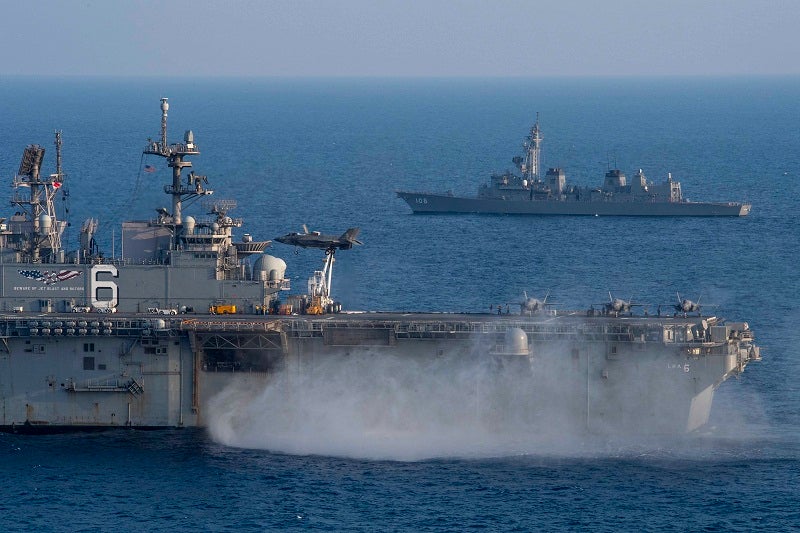
The US Navy’s amphibious assault ship USS America (LHA 6) and Japan Maritime Self-Defense Force (JMSDF) Murasame-class destroyer JS Akebono (DD 108) have conducted bilateral communications exercises and division tactics from 9-11 April.
America, along with the embarked 31st Marine Expeditionary Unit, joined the destroyer for the events while sailing in the Philippine Sea and East China Sea.
America and Akebono carried out the events, which have been designed to improve interoperability between the two navies.
The exercises also focused on the importance of communications and coordination.
Expeditionary Strike Group 7 commander Fred Kacher said: “We are excited to be sailing alongside our Japanese friends and teammates in the East China Sea, just as our team aboard USS Gabrielle Giffords did in the Andaman Sea last week.
“In these challenging times, it is deeply important that we continue to come together as allies and partners in this incredibly vital region of the world.”
As part of these events, the two ships demonstrated warfighting readiness during a replenishment-at-sea.
They also connected fuel lines and performed underway replenishment with the Military Sealift Command fleet replenishment oiler USNS John Ericsson (T-AO 194).
With this, the impact of sustained operational readiness was strengthened for both maritime services.
Akebono is deployed to the East China Sea to maintain regional security and stability.
These cohesive operations with partners and allies will allow the US Navy to operate with other navies by conducting exercises beyond the beach and into sea lanes globally.
The US Navy’s 7th Fleet conducts forward-deployed naval operations in support of the country’s national interests in the Indo-Pacific area of operations. It also interacts with 35 other maritime countries to build partnerships for improved maritime security.



